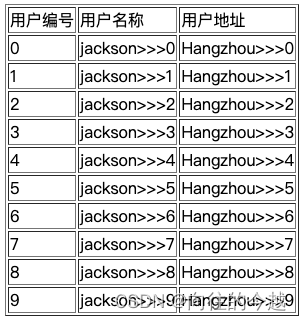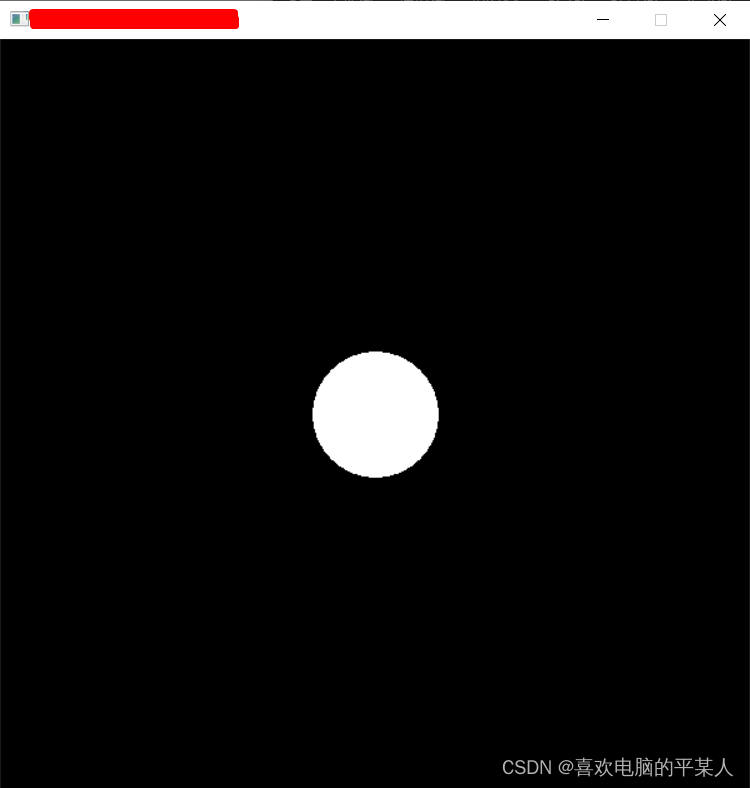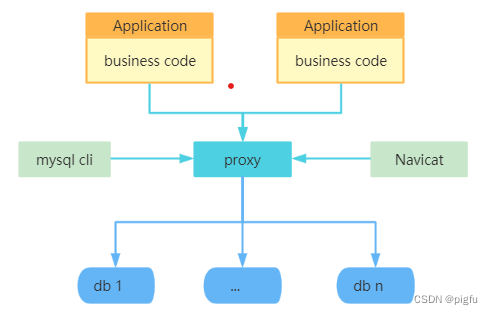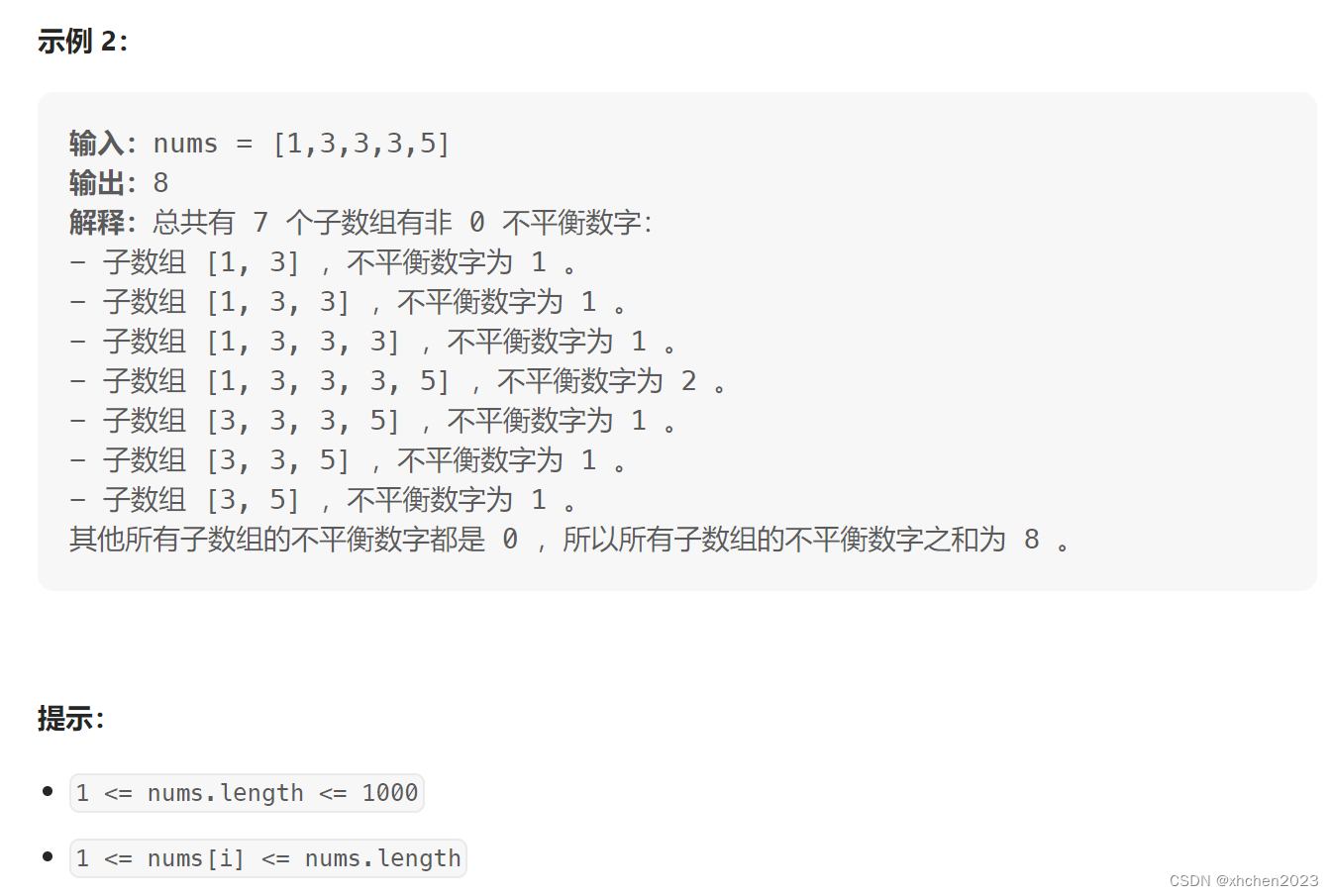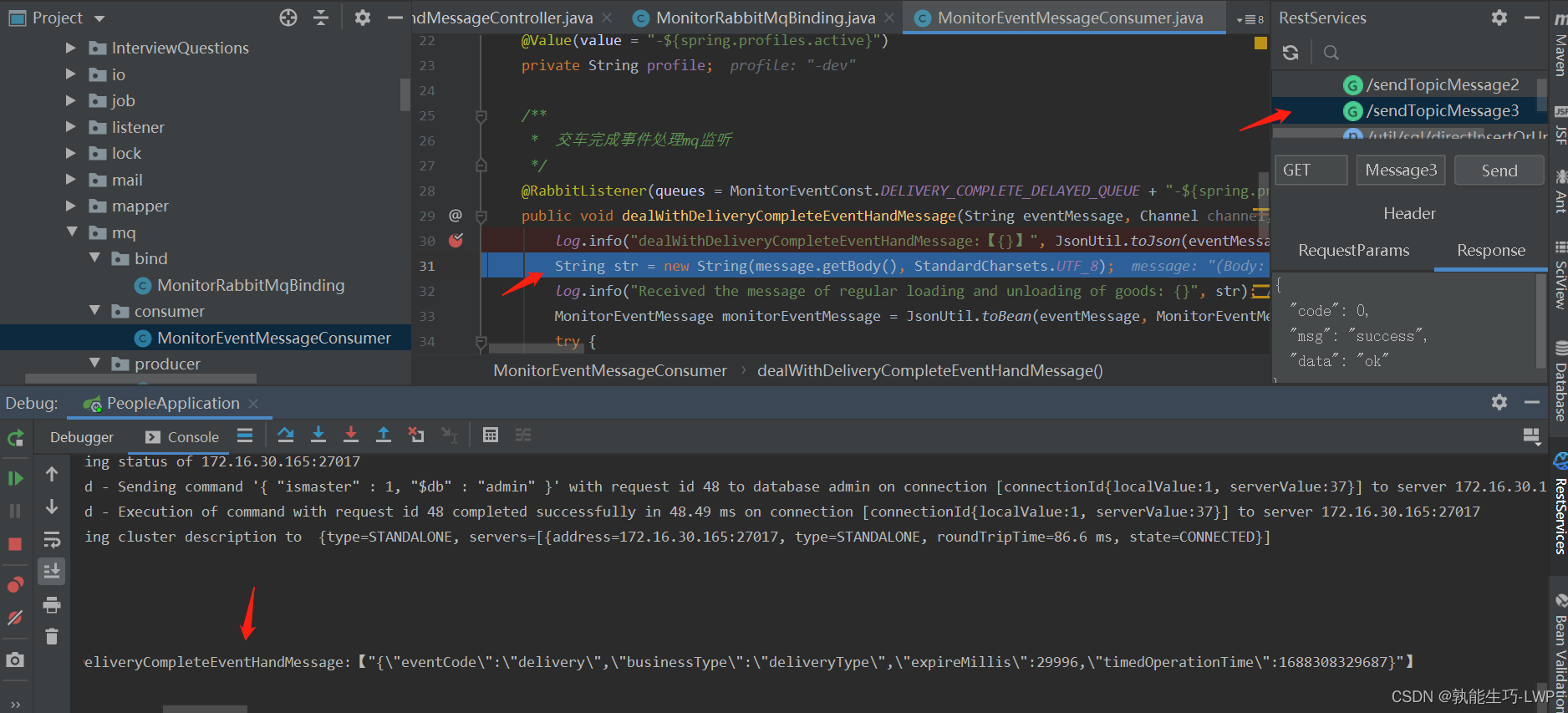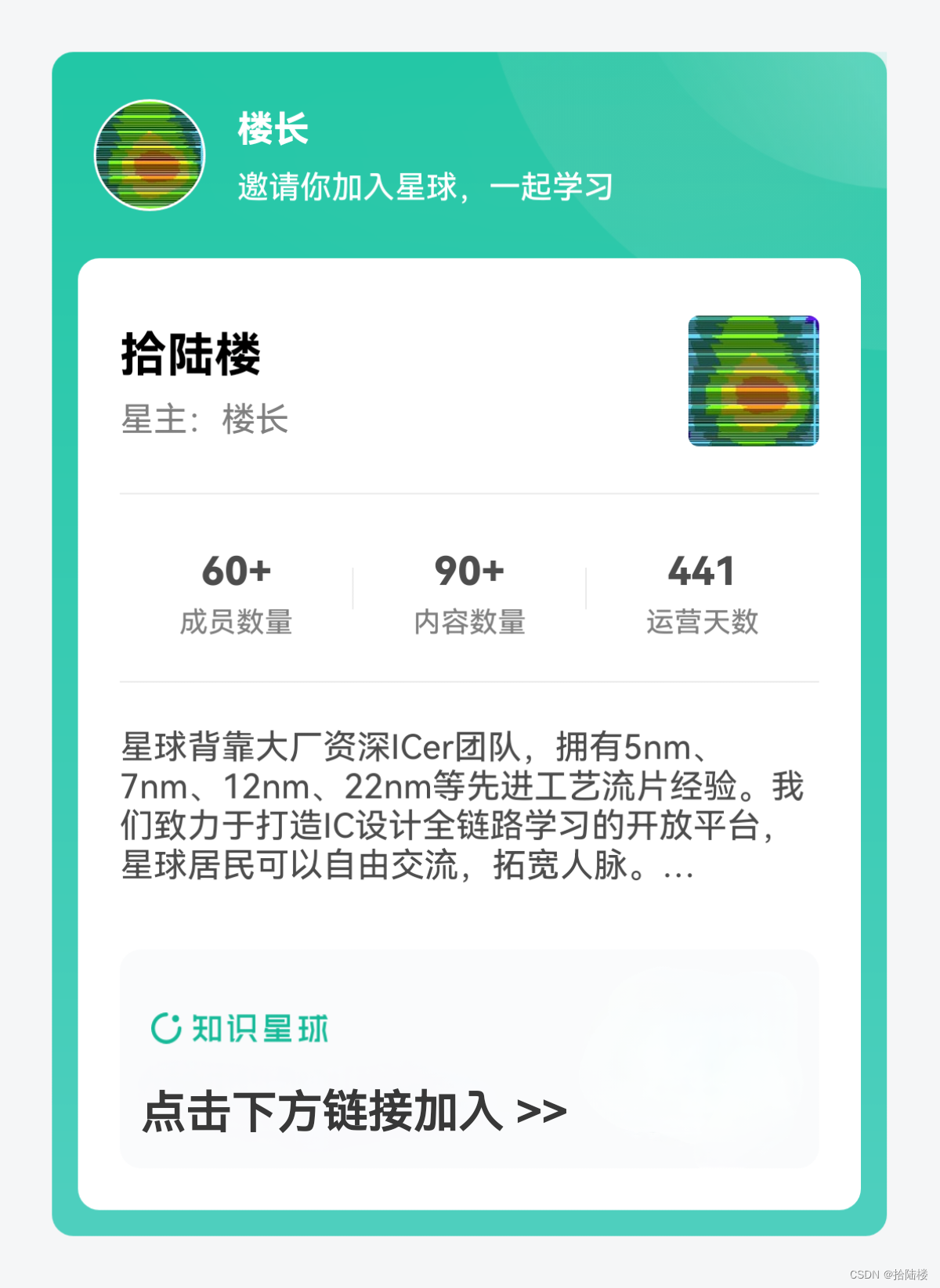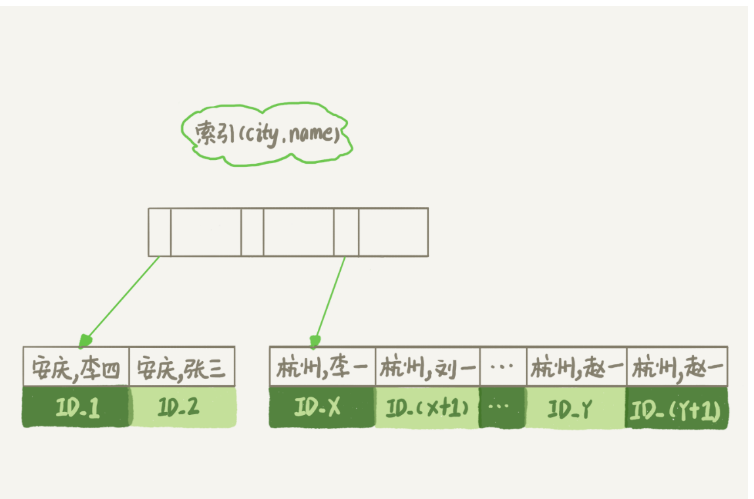一、MyBatis-Plus
1.简介
MyBatis-Plus (opens new window)(简称 MP)是一个 MyBatis (opens new window)的增强工具,在 MyBatis 的基础上只做增强不做改变,为简化开发、提高效率而生。
我们的愿景是成为 MyBatis 最好的搭档,就像 魂斗罗 中的 1P、2P,基友搭配,效率翻倍。

2.特性
- 无侵入:只做增强不做改变,引入它不会对现有工程产生影响,如丝般顺滑
- 损耗小:启动即会自动注入基本 CURD,性能基本无损耗,直接面向对象操作
- 强大的 CRUD 操作:内置通用 Mapper、通用 Service,仅仅通过少量配置即可实现单表大部分 CRUD 操作,更有强大的条件构造器,满足各类使用需求
- 支持 Lambda 形式调用:通过 Lambda 表达式,方便的编写各类查询条件,无需再担心字段写错
- 支持主键自动生成:支持多达 4 种主键策略(内含分布式唯一 ID 生成器 - Sequence),可自由配置,完美解决主键问题
- 支持 ActiveRecord 模式:支持 ActiveRecord 形式调用,实体类只需继承 Model 类即可进行强大的 CRUD 操作
- 支持自定义全局通用操作:支持全局通用方法注入( Write once, use anywhere )
- 内置代码生成器:采用代码或者 Maven 插件可快速生成 Mapper 、 Model 、 Service 、 Controller 层代码,支持模板引擎,更有超多自定义配置等您来使用
- 内置分页插件:基于 MyBatis 物理分页,开发者无需关心具体操作,配置好插件之后,写分页等同于普通 List 查询
- 分页插件支持多种数据库:支持 MySQL、MariaDB、Oracle、DB2、H2、HSQL、SQLite、Postgre、SQLServer 等多种数据库
- 内置性能分析插件:可输出 SQL 语句以及其执行时间,建议开发测试时启用该功能,能快速揪出慢查询
- 内置全局拦截插件:提供全表 delete 、 update 操作智能分析阻断,也可自定义拦截规则,预防误操作
3.支持数据库
任何能使用
MyBatis进行 CRUD, 并且支持标准 SQL 的数据库,具体支持情况如下,如果不在下列表查看分页部分教程 PR 您的支持。
- MySQL,Oracle,DB2,H2,HSQL,SQLite,PostgreSQL,SQLServer,Phoenix,Gauss ,ClickHouse,Sybase,OceanBase,Firebird,Cubrid,Goldilocks,csiidb
- 达梦数据库,虚谷数据库,人大金仓数据库,南大通用(华库)数据库,南大通用数据库,神通数据库,瀚高数据库
4.框架结构
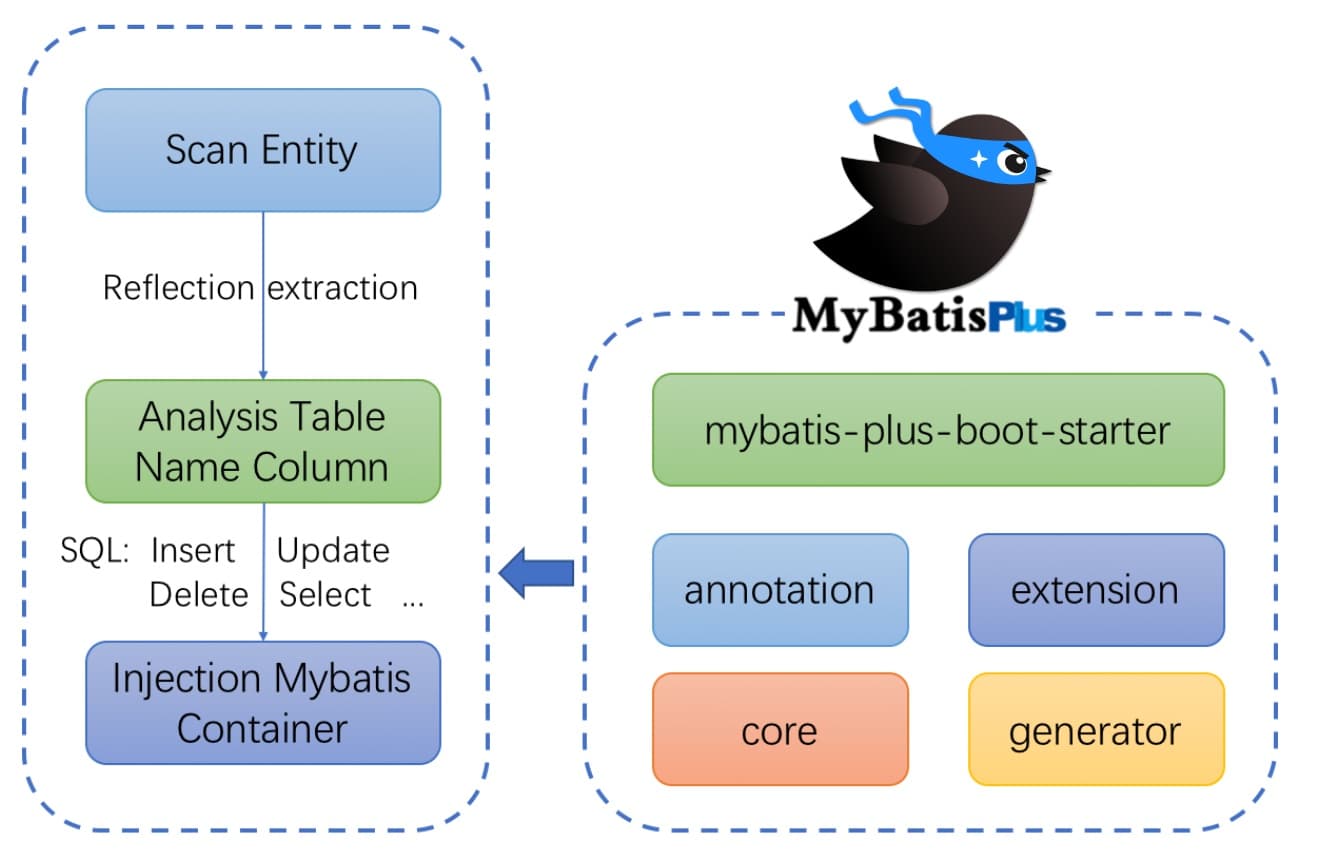
5.官方地址
**官方网站:**https://baomidou.com/
**官方文档:**https://baomidou.com/pages/24112f/
二、入门案例
1.开发环境
- IDE:IDEA 2019.3.5
- JDK:JDK8+
- 构建工具:Maven 3.5.4
- MySQL:MySQL 8.0.24
- Navicat:Navicat Premium 15
- Spring Boot:2.6.7
- MyBatis-Plus:3.5.1
2.建库建表
-
打开Navicat运行以下SQL脚本进行建库建表
CREATE DATABASE `mybatis_plus` /*!40100 DEFAULT CHARACTER SET utf8mb4 */; use `mybatis_plus`; CREATE TABLE `user` ( `id` bigint(20) NOT NULL COMMENT '主键ID', `name` varchar(30) DEFAULT NULL COMMENT '姓名', `age` int(11) DEFAULT NULL COMMENT '年龄', `email` varchar(50) DEFAULT NULL COMMENT '邮箱', PRIMARY KEY (`id`) ) ENGINE=InnoDB DEFAULT CHARSET=utf8; -
插入几条测试数据
INSERT INTO user (id, name, age, email) VALUES (1, 'Jone', 18, 'test1@baomidou.com'), (2, 'Jack', 20, 'test2@baomidou.com'), (3, 'Tom', 28, 'test3@baomidou.com'), (4, 'Sandy', 21, 'test4@baomidou.com'), (5, 'Billie', 24, 'test5@baomidou.com');
3.创建工程
-
使用
Spring Initializer快速初始化一个 Spring Boot 工程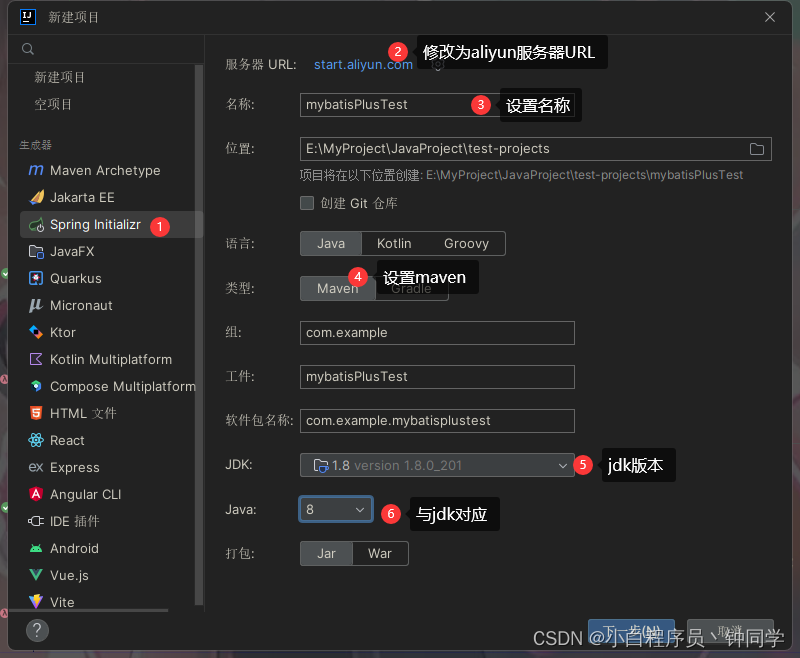
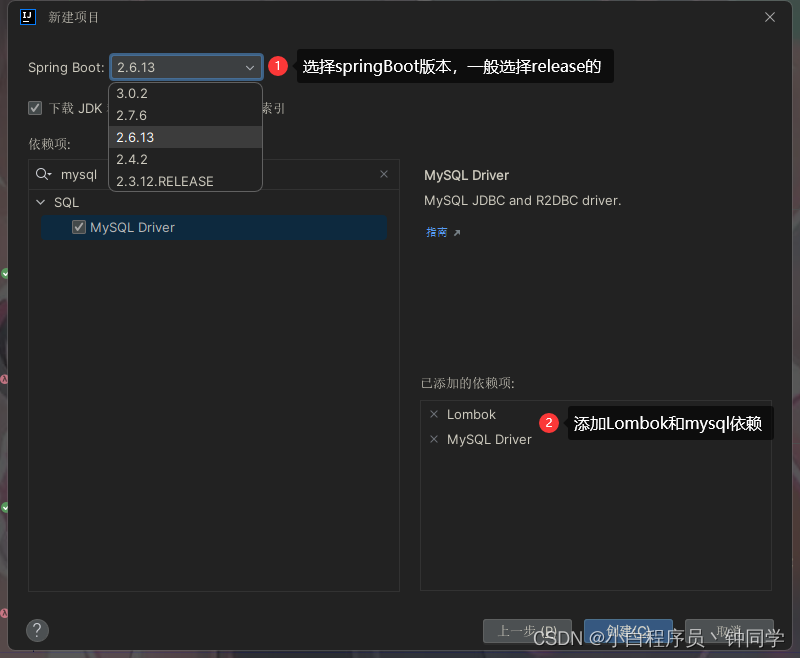

-
引入
MyBatis-Plus的依赖<dependency> <groupId>com.baomidou</groupId> <artifactId>mybatis-plus-boot-starter</artifactId> <version>3.5.1</version> </dependency>
这个时候你可能见不到SpringBoot项目的resources文件夹,需要我们手动创建一下
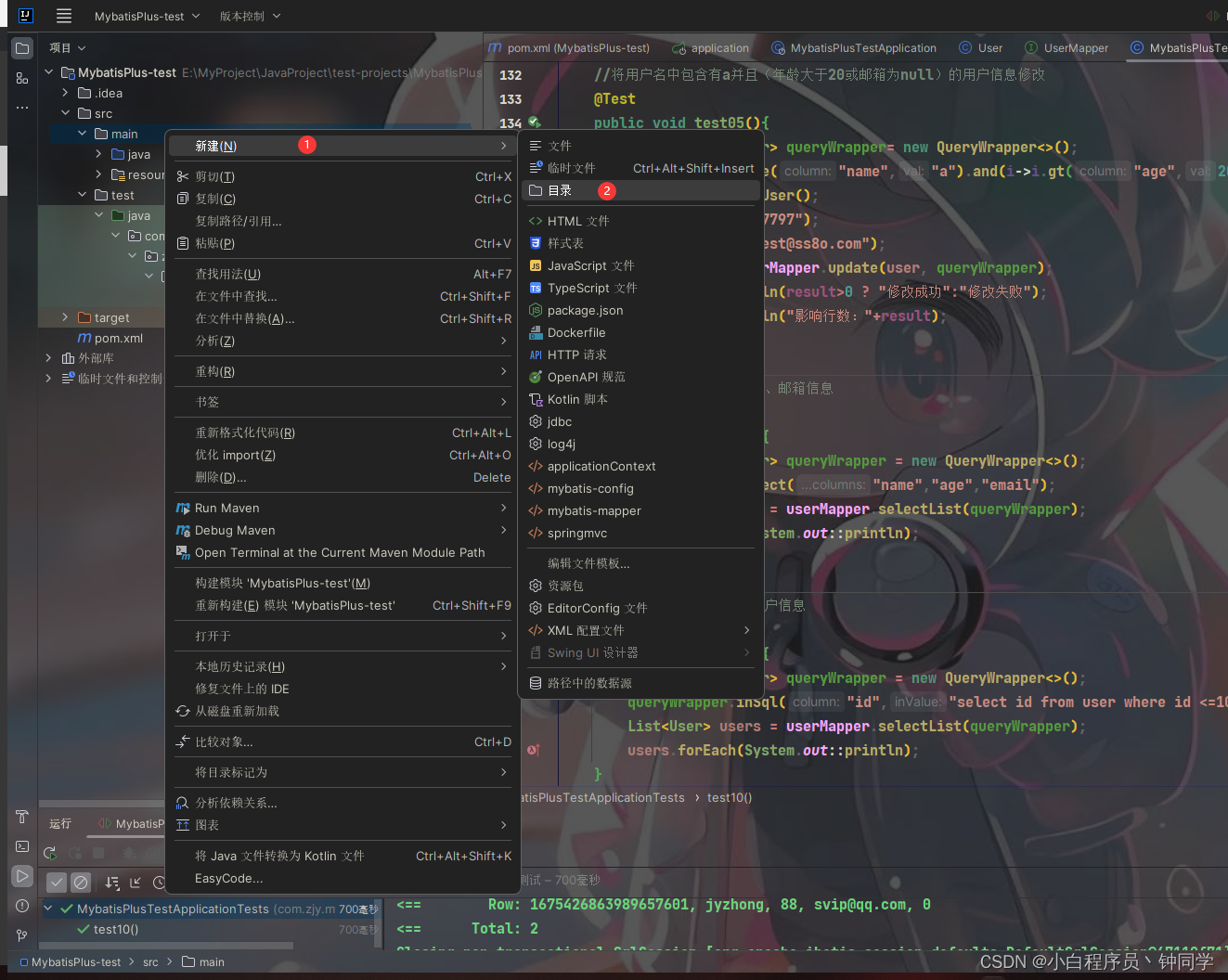
此时你会看到一个资源文件的目录,点击它就可以了 ,在创建一个application.yml的文件就可以了。
4.配置编码
-
配置
application.yml文件#配置端口 server: port: 80 spring: #配置数据源 datasource: #配置连接数据库的信息 driver-class-name: com.mysql.cj.jdbc.Driver url: jdbc:mysql://localhost:3306/mybatis_plus?characterEncoding=utf-8&useSSL=false username: {username} password: {password} #MyBatis-Plus相关配置 mybatis-plus: configuration: #配置日志 log-impl: org.apache.ibatis.logging.stdout.StdOutImpl -
在 Spring Boot 启动类中添加
@MapperScan注解,扫描 Mapper 文件夹@SpringBootApplication @MapperScan("指定Mapper接口所在的包") public class MybatisPlusDemoApplication { public static void main(String[] args) { SpringApplication.run(MybatisPlusDemoApplication.class, args); } } -
编写实体类
User.java(此处使用了 Lombok 简化代码)
在此之前一定要建好自己的目录结构,我的是这样的:

@Data public class User { private Long id; private String name; private Integer age; private String email; } -
编写 Mapper 包下的
UserMapper接口public interface UserMapper extends BaseMapper<User> {}
5.测试查询

-
编写一个测试类
MyBatisPlusTest.java@SpringBootTest public class MyBatisPlusTest { @Resource private UserMapper userMapper; /** * 测试查询所有数据 */ @Test void testSelectList(){ //通过条件构造器查询一个list集合,若没有条件,则可以设置null为参数 List<User> users = userMapper.selectList(null); users.forEach(System.out::println); } } -
控制台打印查询结果

三、增删改查
1.BaseMapper<T>
说明:
- 通用 CRUD 封装BaseMapper 接口,为
Mybatis-Plus启动时自动解析实体表关系映射转换为Mybatis内部对象注入容器- 泛型
T为任意实体对象- 参数
Serializable为任意类型主键Mybatis-Plus不推荐使用复合主键约定每一张表都有自己的唯一id主键- 对象
Wrapper为条件构造器
MyBatis-Plus中的基本CRUD在内置的BaseMapper中都已得到了实现,因此我们继承该接口以后可以直接使用。
本次演示的CRUD操作不包含参数带有条件构造器的方法,关于条件构造器将单独在一个章节进行演示。
BaseMapper中提供的CRUD方法:
-
增加:Insert
// 插入一条记录 int insert(T entity); -
删除:Delete
// 根据 entity 条件,删除记录 int delete(@Param(Constants.WRAPPER) Wrapper<T> wrapper); // 删除(根据ID 批量删除) int deleteBatchIds(@Param(Constants.COLLECTION) Collection<? extends Serializable> idList); // 根据 ID 删除 int deleteById(Serializable id); // 根据 columnMap 条件,删除记录 int deleteByMap(@Param(Constants.COLUMN_MAP) Map<String, Object> columnMap); -
修改:Update
// 根据 whereWrapper 条件,更新记录 int update(@Param(Constants.ENTITY) T updateEntity, @Param(Constants.WRAPPER) Wrapper<T> whereWrapper); // 根据 ID 修改 int updateById(@Param(Constants.ENTITY) T entity); -
查询:Selete
// 根据 ID 查询 T selectById(Serializable id); // 根据 entity 条件,查询一条记录 T selectOne(@Param(Constants.WRAPPER) Wrapper<T> queryWrapper); // 查询(根据ID 批量查询) List<T> selectBatchIds(@Param(Constants.COLLECTION) Collection<? extends Serializable> idList); // 根据 entity 条件,查询全部记录 List<T> selectList(@Param(Constants.WRAPPER) Wrapper<T> queryWrapper); // 查询(根据 columnMap 条件) List<T> selectByMap(@Param(Constants.COLUMN_MAP) Map<String, Object> columnMap); // 根据 Wrapper 条件,查询全部记录 List<Map<String, Object>> selectMaps(@Param(Constants.WRAPPER) Wrapper<T> queryWrapper); // 根据 Wrapper 条件,查询全部记录。注意: 只返回第一个字段的值 List<Object> selectObjs(@Param(Constants.WRAPPER) Wrapper<T> queryWrapper); // 根据 entity 条件,查询全部记录(并翻页) IPage<T> selectPage(IPage<T> page, @Param(Constants.WRAPPER) Wrapper<T> queryWrapper); // 根据 Wrapper 条件,查询全部记录(并翻页) IPage<Map<String, Object>> selectMapsPage(IPage<T> page, @Param(Constants.WRAPPER) Wrapper<T> queryWrapper); // 根据 Wrapper 条件,查询总记录数 Integer selectCount(@Param(Constants.WRAPPER) Wrapper<T> queryWrapper);
2.调用Mapper层实现CRUD
2.1 插入
最终执行的结果,所获取的id为1527206783590903810
这是因为MyBatis-Plus在实现插入数据时,会默认基于雪花算法的策略生成id
/**
* 测试插入一条数据
* MyBatis-Plus在实现插入数据时,会默认基于雪花算法的策略生成id
*/
@Test
public void testInsert(){
User user = new User();
user.setName("Vz");
user.setAge(21);
user.setEmail("vz@oz6.cn");
int result = userMapper.insert(user);
System.out.println(result > 0 ? "添加成功!" : "添加失败!");
System.out.println("受影响的行数为:" + result);
//1527206783590903810(当前 id 为雪花算法自动生成的id)
System.out.println("id自动获取" + user.getId());
}
2.2 删除
a、根据ID删除数据
调用方法:int deleteById(Serializable id);
/**
* 测试根据id删除一条数据
*/
@Test
public void testDeleteById(){
int result = userMapper.deleteById(1527206783590903810L);
System.out.println(result > 0 ? "删除成功!" : "删除失败!");
System.out.println("受影响的行数为:" + result);
}
b、根据ID批量删除数据
调用方法:int deleteBatchIds(@Param(Constants.COLLECTION) Collection<? extends Serializable> idList);
/**
* 测试通过id批量删除数据
*/
@Test
public void testDeleteBatchIds(){
List<Long> ids = Arrays.asList(6L,7L,8L);
int result = userMapper.deleteBatchIds(ids);
System.out.println(result > 0 ? "删除成功!" : "删除失败!");
System.out.println("受影响的行数为:" + result);
}
c、根据Map条件删除数据
调用方法:int deleteByMap(@Param(Constants.COLUMN_MAP) Map<String, Object> columnMap);
/**
* 测试根据Map集合中所设置的条件删除数据
*/
@Test
public void testDeleteByMap(){
//当前演示为根据name和age删除数据
//执行SQL为:DELETE FROM user WHERE name = ? AND age = ?
Map<String,Object> map = new HashMap<>();
map.put("name","Vz");
map.put("age",21);
int result = userMapper.deleteByMap(map);
System.out.println(result > 0 ? "删除成功!" : "删除失败!");
System.out.println("受影响的行数为:" + result);
}
2.3 修改
调用方法:int updateById(@Param(Constants.ENTITY) T entity);
/**
* 测试根据id修改用户信息
*/
@Test
public void testUpdateById(){
//执行SQL为: UPDATE user SET name=?, age=?, email=? WHERE id=?
User user = new User();
user.setId(6L);
user.setName("VzUpdate");
user.setAge(18);
user.setEmail("Vz@sina.com");
int result = userMapper.updateById(user);
System.out.println(result > 0 ? "修改成功!" : "修改失败!");
System.out.println("受影响的行数为:" + result);
}
2.4 查询
a、根据ID查询用户信息
调用方法:T selectById(Serializable id);
/**
* 测试根据id查询用户数据
*/
@Test
public void testSelectById(){
User user = userMapper.selectById(1L);
System.out.println(user);
}
b、根据多个ID查询多个用户信息
调用方法:List selectBatchIds(@Param(Constants.COLLECTION) Collection<? extends Serializable> idList);
/**
* 根据多个id查询用户数据
*/
@Test
public void testSelectBatchIds(){
//执行SQL为:SELECT id,name,age,email FROM user WHERE id IN ( ? , ? , ? )
List<Long> ids = Arrays.asList(1L,2L,3L);
List<User> users = userMapper.selectBatchIds(ids);
users.forEach(System.out::println);
}
c、根据Map条件查询用户信息
调用方法:List selectByMap(@Param(Constants.COLUMN_MAP) Map<String, Object> columnMap);
/**
* 根据Map所设置的条件查询用户
*/
@Test
public void testSelectByMap(){
//执行SQL为:SELECT id,name,age,email FROM user WHERE age = ?
Map<String,Object> map = new HashMap<>();
map.put("age",18);
List<User> users = userMapper.selectByMap(map);
users.forEach(System.out::println);
}
d、查询所有用户信息
调用方法:List selectList(@Param(Constants.WRAPPER) Wrapper queryWrapper);
/**
* 测试查询所有数据
*/
@Test
void testSelectList(){
List<User> users = userMapper.selectList(null);
users.forEach(System.out::println);
}
3.通用Service
说明:
- 通用 Service CRUD 封装
IService接口,进一步封装 CRUD 采用get 查询单行remove 删除list 查询集合page 分页前缀命名方式区分Mapper层避免混淆,- 泛型
T为任意实体对象- 建议如果存在自定义通用 Service 方法的可能,请创建自己的
IBaseService继承Mybatis-Plus提供的基类- 对象
Wrapper为 条件构造器
MyBatis-Plus中有一个接口 **IService**和其实现类 ServiceImpl,封装了常见的业务层逻辑,详情查看源码IService和ServiceImpl
因此我们在使用的时候仅需在自己定义的**Service接口中继承IService接口,在自己的实现类中实现自己的Service并继承ServiceImpl**即可
IService中的CRUD方法
-
增加:Save、SaveOrUpdate
// 插入一条记录(选择字段,策略插入) boolean save(T entity); // 插入(批量) boolean saveBatch(Collection<T> entityList); // 插入(批量) boolean saveBatch(Collection<T> entityList, int batchSize); // TableId 注解存在更新记录,否插入一条记录 boolean saveOrUpdate(T entity); // 根据updateWrapper尝试更新,否继续执行saveOrUpdate(T)方法 boolean saveOrUpdate(T entity, Wrapper<T> updateWrapper); // 批量修改插入 boolean saveOrUpdateBatch(Collection<T> entityList); // 批量修改插入 boolean saveOrUpdateBatch(Collection<T> entityList, int batchSize); -
删除:Remove
// 根据 entity 条件,删除记录 boolean remove(Wrapper<T> queryWrapper); // 根据 ID 删除 boolean removeById(Serializable id); // 根据 columnMap 条件,删除记录 boolean removeByMap(Map<String, Object> columnMap); // 删除(根据ID 批量删除) boolean removeByIds(Collection<? extends Serializable> idList); -
修改:Update
// 根据 UpdateWrapper 条件,更新记录 需要设置sqlset boolean update(Wrapper<T> updateWrapper); // 根据 whereWrapper 条件,更新记录 boolean update(T updateEntity, Wrapper<T> whereWrapper); // 根据 ID 选择修改 boolean updateById(T entity); // 根据ID 批量更新 boolean updateBatchById(Collection<T> entityList); // 根据ID 批量更新 boolean updateBatchById(Collection<T> entityList, int batchSize); -
查询:Get、List、Count
// 根据 ID 查询 T getById(Serializable id); // 根据 Wrapper,查询一条记录。结果集,如果是多个会抛出异常,随机取一条加上限制条件 wrapper.last("LIMIT 1") T getOne(Wrapper<T> queryWrapper); // 根据 Wrapper,查询一条记录 T getOne(Wrapper<T> queryWrapper, boolean throwEx); // 根据 Wrapper,查询一条记录 Map<String, Object> getMap(Wrapper<T> queryWrapper); // 根据 Wrapper,查询一条记录 <V> V getObj(Wrapper<T> queryWrapper, Function<? super Object, V> mapper); // 查询所有 List<T> list(); // 查询列表 List<T> list(Wrapper<T> queryWrapper); // 查询(根据ID 批量查询) Collection<T> listByIds(Collection<? extends Serializable> idList); // 查询(根据 columnMap 条件) Collection<T> listByMap(Map<String, Object> columnMap); // 查询所有列表 List<Map<String, Object>> listMaps(); // 查询列表 List<Map<String, Object>> listMaps(Wrapper<T> queryWrapper); // 查询全部记录 List<Object> listObjs(); // 查询全部记录 <V> List<V> listObjs(Function<? super Object, V> mapper); // 根据 Wrapper 条件,查询全部记录 List<Object> listObjs(Wrapper<T> queryWrapper); // 根据 Wrapper 条件,查询全部记录 <V> List<V> listObjs(Wrapper<T> queryWrapper, Function<? super Object, V> mapper); // 查询总记录数 int count(); // 根据 Wrapper 条件,查询总记录数 int count(Wrapper<T> queryWrapper); -
分页:Page
// 根据 ID 查询 T getById(Serializable id); // 根据 Wrapper,查询一条记录。结果集,如果是多个会抛出异常,随机取一条加上限制条件 wrapper.last("LIMIT 1") T getOne(Wrapper<T> queryWrapper); // 根据 Wrapper,查询一条记录 T getOne(Wrapper<T> queryWrapper, boolean throwEx); // 根据 Wrapper,查询一条记录 Map<String, Object> getMap(Wrapper<T> queryWrapper); // 根据 Wrapper,查询一条记录 <V> V getObj(Wrapper<T> queryWrapper, Function<? super Object, V> mapper);
4.调用Service层操作数据
我们在自己的Service接口中通过继承MyBatis-Plus提供的IService接口,不仅可以获得其提供的CRUD方法,而且还可以使用自身定义的方法。
-
创建
UserService并继承IService/** * UserService继承IService模板提供的基础功能 */ public interface UserService extends IService<User> {} -
创建
UserService的实现类并继承ServiceImpl/** * ServiceImpl实现了IService,提供了IService中基础功能的实现 * 若ServiceImpl无法满足业务需求,则可以使用自定的UserService定义方法,并在实现类中实现 */ @Service public class UserServiceImpl extends ServiceImpl<UserMapper,User> implements UserService{} -
测试查询记录数
调用方法:int count();
@Test public void testGetCount(){ //查询总记录数 //执行的SQL为:SELECT COUNT( * ) FROM user long count = userService.count(); System.out.println("总记录数:" + count); } -
测试批量插入数据
调用方法:boolean saveBatch(Collection entityList);
@Test public void test(){ List<User> list = new ArrayList<>(); for (int i = 1; i <= 10; i++) { User user = new User(); user.setName("Vz"+i); user.setAge(20+i); list.add(user); } boolean b = userService.saveBatch(list); System.out.println(b ? "添加成功!" : "添加失败!"); }
四、常用注解
MyBatis-Plus提供的注解可以帮我们解决一些数据库与实体之间相互映射的问题。
1.@TableName
经过以上的测试,在使用MyBatis-Plus实现基本的CRUD时,我们并没有指定要操作的表,只是在Mapper接口继承BaseMapper时,设置了泛型User,而操作的表为user表,由此得出结论,MyBatis-Plus在确定操作的表时,由BaseMapper的泛型决定,即实体类型决定,且默认操作的表名和实体类型的类名一致。
1.1 引出问题
若实体类类型的类名和要操作的表的表名不一致,会出现什么问题?
-
我们将表
user更名为t_user,测试查询功能
-
程序抛出异常,Table ‘mybatis_plus.user’ doesn’t exist,因为现在的表名为
t_user,而默认操作的表名和实体类型的类名一致,即user表
1.2解决问题
a、使用注解解决问题
在实体类类型上添加
@TableName("t_user"),标识实体类对应的表,即可成功执行SQL语句
@Data
@TableName("t_user")
public class User {
private Long id;
private String name;
private Integer age;
private String email;
}
b、使用全局配置解决问题
在开发的过程中,我们经常遇到以上的问题,即实体类所对应的表都有固定的前缀,例如
t_或tbl_此时,可以使用MyBatis-Plus提供的全局配置,为实体类所对应的表名设置默认的前缀,那么就不需要在每个实体类上通过@TableName标识实体类对应的表
mybatis-plus:
global-config:
db-config:
# 设置实体类所对应的表的统一前缀
table-prefix: t_
2.@TableId
经过以上的测试,MyBatis-Plus在实现CRUD时,会默认将id作为主键列,并在插入数据时,默认基于雪花算法的策略生成id
2.1引出问题
若实体类和表中表示主键的不是id,而是其他字段,例如uid,MyBatis-Plus会自动识别uid为主键列吗?
-
我们实体类中的属性
id改为uid,将表中的字段id也改为uid,测试添加功能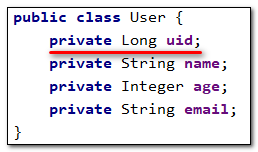

-
程序抛出异常,Field ‘uid’ doesn’t have a default value,说明MyBatis-Plus没有将
uid作为主键赋值
2.2解决问题
在实体类中uid属性上通过
@TableId将其标识为主键,即可成功执行SQL语句
@Date
public class User {
@TableId
private Long uid;
private String name;
private Integer age;
private String email;
}
2.3@TableId的value属性
若实体类中主键对应的属性为id,而表中表示主键的字段为uid,此时若只在属性id上添加注解@TableId,则抛出异常Unknown column ‘id’ in ‘field list’,即MyBatis-Plus仍然会将id作为表的主键操作,而表中表示主键的是字段uid此时需要通过@TableId注解的value属性,指定表中的主键字段,
@TableId("uid")或@TableId(value="uid")

2.4@TableId的type属性
type属性用来定义主键策略:默认雪花算法
常用的主键策略:
| 值 | 描述 |
|---|---|
| IdType.ASSIGN_ID(默认) | 基于雪花算法的策略生成数据id,与数据库id是否设置自增无关 |
| IdType.AUTO | 使用数据库的自增策略,注意,该类型请确保数据库设置了id自增, |
| IdType.NONE | 无状态,该类型为未设置主键类型(注解里等于跟随全局,全局里约等于INPUT) |
| IdType.INPUT | insert前自行设置set主键值 |
| IdType.ASSIGN_UUID | 分配UUID,主键类型为String(since 3.3.0),使用接口IdentifierGenerator的方法nextUUID(默认default方法) |
配置全局主键策略:
#MyBatis-Plus相关配置
mybatis-plus:
configuration:
#配置日志
log-impl: org.apache.ibatis.logging.stdout.StdOutImpl
global-config:
db-config:
#配置mp的主键策略为自增
id-type: auto
# 设置实体类所对应的表的统一前缀
table-prefix: t_
3.@TableField
经过以上的测试,我们可以发现,MyBatis-Plus在执行SQL语句时,要保证实体类中的属性名和表中的字段名一致
如果实体类中的属性名和字段名不一致的情况,会出现什么问题呢?
3.1情况一
若实体类中的属性使用的是驼峰命名风格,而表中的字段使用的是下划线命名风格
例如实体类属性userName,表中字段user_name
此时MyBatis-Plus会自动将下划线命名风格转化为驼峰命名风格
相当于在MyBatis中配置
3.2情况二
若实体类中的属性和表中的字段不满足情况1
例如实体类属性
name,表中字段username此时需要在实体类属性上使用
@TableField("username")设置属性所对应的字段名
public class User {
@TableId("uid")
private Long id;
@TableField("username")
private String name;
private Integer age;
private String email;
}
4.@TableLogic
4.1逻辑删除
物理删除:真实删除,将对应数据从数据库中删除,之后查询不到此条被删除的数据
逻辑删除:假删除,将对应数据中代表是否被删除字段的状态修改为“被删除状态”,之后在数据库中仍旧能看到此条数据记录
使用场景:可以进行数据恢复
4.2 实现逻辑删除
-
数据库中创建逻辑删除状态列,设置默认值为0

-
实体类中添加逻辑删除属性
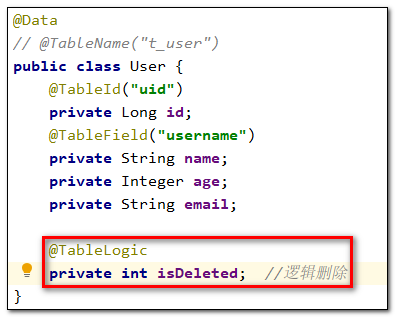
-
测试删除功能,真正执行的是修改
public void testDeleteById(){ int result = userMapper.deleteById(1527472864163348482L); System.out.println(result > 0 ? "删除成功!" : "删除失败!"); System.out.println("受影响的行数为:" + result); }
-
此时执行查询方法,查询的结果为自动添加条件
is_deleted=0
5.@Version
描述:乐观锁注解、标记 @Verison 在字段上
6.@EnumValue
描述:通枚举类注解(注解在枚举字段上)
五、条件构造器
MyBatis-Plus 通过 EntityWrapper(简称 EW,MP 封装的一个查询条件构造器)或者 Condition(与 EW 类似) 来让用户自由的构建查询条件,简单便捷,没有额外的负担, 能够有效提高开发效率,它主要用于处理 sql 拼接,排序,实体参数查询等。
注意:使用的是数据库字段,不是 Java 属性!
警告:MyBatis-Plus不支持以及不赞成在 RPC 调用中把 Wrapper 进行传输,Wrapper 很重,传输 Wrapper 可以类比为你的 controller 用 map 接收值(开发一时爽,维护火葬场),正确的 RPC 调用姿势是写一个 DTO 进行传输,被调用方再根据 DTO 执行相应的操作。
1.Wrapper介绍
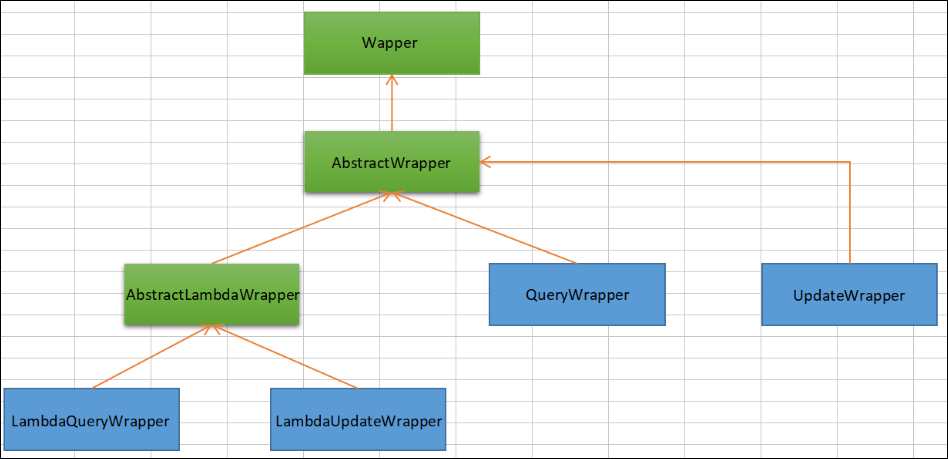
Wrapper: 条件构造抽象类,最顶端父类-
AbstractWrapper: 用于查询条件封装,生成 sql 的 where 条件 -
QueryWrapper: 查询条件封装 -
UpdateWrapper: Update 条件封装 -
AbstractLambdaWrapper: 使用Lambda 语法-
LambdaQueryWrapper:用于Lambda语法使用的查询Wrapper -
LambdaUpdateWrapper: Lambda 更新封装Wrapper
-
-
2.QueryWrapper
-
组装查询条件
**执行SQL:**SELECT uid AS id,username AS name,age,email,is_deleted FROM t_user WHERE is_deleted=0 AND (username LIKE ? AND age BETWEEN ? AND ? AND email IS NOT NULL)
public void test01(){ //查询用户名包含a,年龄在20到30之间,邮箱信息不为null的用户信息 QueryWrapper<User> queryWrapper = new QueryWrapper<>(); queryWrapper.like("username","a").between("age",20,30).isNotNull("email"); List<User> users = userMapper.selectList(queryWrapper); users.forEach(System.out::println); } -
组装排序条件
**执行SQL:**SELECT uid AS id,username AS name,age,email,is_deleted FROM t_user WHERE is_deleted=0 ORDER BY age DESC,id ASC
public void test02(){ //查询用户信息,按照年龄的降序排序,若年龄相同,则按照id升序排序 QueryWrapper<User> queryWrapper = new QueryWrapper<>(); queryWrapper.orderByDesc("age").orderByAsc("id"); List<User> users = userMapper.selectList(queryWrapper); users.forEach(System.out::println); } -
组装删除条件
**执行SQL:**UPDATE t_user SET is_deleted=1 WHERE is_deleted=0 AND (email IS NULL)
public void test03(){ //删除邮箱地址为null的用户信息 QueryWrapper<User> queryWrapper = new QueryWrapper<>(); queryWrapper.isNull("email"); int result = userMapper.delete(queryWrapper); System.out.println(result > 0 ? "删除成功!" : "删除失败!"); System.out.println("受影响的行数为:" + result); } -
条件的优先级
**执行SQL:**UPDATE t_user SET user_name=?, email=? WHERE is_deleted=0 AND (age > ? AND user_name LIKE ? OR email IS NULL)
public void test04(){ //将(年龄大于20并且用户名中包含有a)或邮箱为null的用户信息修改 UpdateWrapper<User> updateWrapper = new UpdateWrapper<>(); updateWrapper.gt("age",20).like("username","a").or().isNull("email"); User user = new User(); user.setName("Oz"); user.setEmail("test@oz6.com"); int result = userMapper.update(user, updateWrapper); System.out.println(result > 0 ? "修改成功!" : "修改失败!"); System.out.println("受影响的行数为:" + result); }**执行SQL:**UPDATE t_user SET username=?, email=? WHERE is_deleted=0 AND (username LIKE ? AND (age > ? OR email IS NULL))
public void test05(){ //将用户名中包含有a并且(年龄大于20或邮箱为null)的用户信息修改 UpdateWrapper<User> updateWrapper = new UpdateWrapper<>(); updateWrapper.like("username","a").and(i->i.gt("age",20).or().isNull("email")); User user = new User(); user.setName("Vz7797"); user.setEmail("test@ss8o.com"); int result = userMapper.update(user, updateWrapper); System.out.println(result > 0 ? "修改成功!" : "修改失败!"); System.out.println("受影响的行数为:" + result); } -
组装select子句
**执行SQL:**SELECT username,age,email FROM t_user WHERE is_deleted=0
public void test06(){ //查询用户的用户名、年龄、邮箱信息 QueryWrapper<User> queryWrapper = new QueryWrapper<>(); queryWrapper.select("username","age","email"); List<Map<String, Object>> maps = userMapper.selectMaps(queryWrapper); maps.forEach(System.out::println); } -
实现子查询
**执行SQL:**SELECT uid AS id,user_name AS name,age,email,is_deleted FROM t_user WHERE is_deleted=0 AND (uid IN (select uid from t_user where uid <= 100))
public void test07(){ //查询id小于等于100的用户信息 QueryWrapper<User> queryWrapper = new QueryWrapper<>(); queryWrapper.inSql("uid", "select uid from t_user where uid <= 100"); List<User> list = userMapper.selectList(queryWrapper); list.forEach(System.out::println); }
3.UpdateWrapper
UpdateWrapper不仅拥有QueryWrapper的组装条件功能,还提供了set方法进行修改对应条件的数据库信息
public void test08(){
//将用户名中包含有a并且(年龄大于20或邮箱为null)的用户信息修改
UpdateWrapper<User> updateWrapper = new UpdateWrapper<>();
updateWrapper.like("username","a").and( i -> i.gt("age",20).or().isNull("email")).set("email","svip@qq.com");
int result = userMapper.update(null, updateWrapper);
System.out.println(result > 0 ? "修改成功!" : "修改失败!");
System.out.println("受影响的行数为:" + result);
}
4.condition
在真正开发的过程中,组装条件是常见的功能,而这些条件数据来源于用户输入,是可选的,因此我们在组装这些条件时,必须先判断用户是否选择了这些条件,若选择则需要组装该条件,若没有选择则一定不能组装,以免影响SQL执行的结果
-
思路一
**执行SQL:**SELECT uid AS id,user_name AS name,age,email,is_deleted FROM t_user WHERE is_deleted=0 AND (user_name LIKE ? AND age <= ?)
public void test09(){ String username = "a"; Integer ageBegin = null; Integer ageEnd = 30; QueryWrapper<User> queryWrapper = new QueryWrapper<>(); if(StringUtils.isNotBlank(username)){ //isNotBlank判断某个字符创是否不为空字符串、不为null、不为空白符 queryWrapper.like("user_name", username); } if(ageBegin != null){ queryWrapper.ge("age", ageBegin); } if(ageEnd != null){ queryWrapper.le("age", ageEnd); } List<User> list = userMapper.selectList(queryWrapper); list.forEach(System.out::println); } -
思路二
上面的实现方案没有问题,但是代码比较复杂,我们可以使用带condition参数的重载方法构建查询条件,简化代码的编写
public void test10(){ String username = "a"; Integer ageBegin = null; Integer ageEnd = 30; QueryWrapper<User> queryWrapper = new QueryWrapper<>(); queryWrapper.like(StringUtils.isNotBlank(username), "user_name", username) .ge(ageBegin != null, "age", ageBegin) .le(ageEnd != null, "age", ageEnd); List<User> list = userMapper.selectList(queryWrapper); list.forEach(System.out::println); }
5.LambdaQueryWrapper
功能等同于QueryWrapper,提供了Lambda表达式的语法可以避免填错列名。
public void test11(){
String username = "a";
Integer ageBegin = null;
Integer ageEnd = 30;
LambdaQueryWrapper<User> queryWrapper = new LambdaQueryWrapper<>();
queryWrapper.like(StringUtils.isNotBlank(username), User::getName, username)
.ge(ageBegin != null, User::getAge, ageBegin)
.le(ageEnd != null, User::getAge, ageEnd);
List<User> list = userMapper.selectList(queryWrapper);
list.forEach(System.out::println);
}
6.LambdaUpdateWrapper
功能等同于UpdateWrapper,提供了Lambda表达式的语法可以避免填错列名。
public void test12(){
//将用户名中包含有a并且(年龄大于20或邮箱为null)的用户信息修改
LambdaUpdateWrapper<User> updateWrapper = new LambdaUpdateWrapper<>();
updateWrapper.like(User::getName, "a")
.and(i -> i.gt(User::getAge, 20).or().isNull(User::getEmail));
updateWrapper.set(User::getName, "小黑").set(User::getEmail,"abc@atguigu.com");
int result = userMapper.update(null, updateWrapper);
System.out.println("result:"+result);
}
7.构造器的使用
7.1 allEq
allEq(Map<R, V> params)
allEq(Map<R, V> params, boolean null2IsNull)
allEq(boolean condition, Map<R, V> params, boolean null2IsNull)
- 全部
eq(或个别isNull)
个别参数说明:
params:key为数据库字段名,value为字段值
null2IsNull:为true则在map的value为null时调用 isNull方法,为false时则忽略value为null的
例1: allEq({id:1,name:"老王",age:null})—>id = 1 and name = '老王' and age is null
例2: allEq({id:1,name:"老王",age:null}, false)—>id = 1 and name = '老王'
allEq(BiPredicate<R, V> filter, Map<R, V> params)
allEq(BiPredicate<R, V> filter, Map<R, V> params, boolean null2IsNull)
allEq(boolean condition, BiPredicate<R, V> filter, Map<R, V> params, boolean null2IsNull)
个别参数说明:
filter : 过滤函数,是否允许字段传入比对条件中
params 与 null2IsNull : 同上
例1: allEq((k,v) -> k.indexOf(“a”) >= 0, {id:1,name:“老王”,age:null})—>name = ‘老王’ and age is null
例2: allEq((k,v) -> k.indexOf(“a”) >= 0, {id:1,name:“老王”,age:null}, false)—>name = ‘老王’
7.2 eq
eq(R column, Object val)
eq(boolean condition, R column, Object val)
- 等于 =
- 例:
eq("name", "老王")—>name = '老王'
7.3 ne
ne(R column, Object val)
ne(boolean condition, R column, Object val)
- 不等于 <>
- 例:
ne("name", "老王")—>name <> '老王'
7.4 gt
gt(R column, Object val)
gt(boolean condition, R column, Object val)
- 大于 >
- 例:
gt("age", 18)—>age > 18
7.5 ge
ge(R column, Object val)
ge(boolean condition, R column, Object val)
- 大于等于 >=
- 例:
ge("age", 18)—>age >= 18
7.6 lt
lt(R column, Object val)
lt(boolean condition, R column, Object val)
- 小于 <
- 例:
lt("age", 18)—>age < 18
7.7 le
le(R column, Object val)
le(boolean condition, R column, Object val)
- 小于等于 <=
- 例:
le("age", 18)—>age <= 18
7.8 between
between(R column, Object val1, Object val2)
between(boolean condition, R column, Object val1, Object val2)
- BETWEEN 值1 AND 值2
- 例:
between("age", 18, 30)—>age between 18 and 30
7.9 notBetween
notBetween(R column, Object val1, Object val2)
notBetween(boolean condition, R column, Object val1, Object val2)
- NOT BETWEEN 值1 AND 值2
- 例:
notBetween("age", 18, 30)—>age not between 18 and 30
7.10 like
like(R column, Object val)
like(boolean condition, R column, Object val)
- LIKE ‘%值%’
- 例:
like("name", "王")—>name like '%王%'
7.11 notLike
notLike(R column, Object val)
notLike(boolean condition, R column, Object val)
- NOT LIKE ‘%值%’
- 例:
notLike("name", "王")—>name not like '%王%'
7.12 likeLeft
likeLeft(R column, Object val)
likeLeft(boolean condition, R column, Object val)
- LIKE ‘%值’
- 例:
likeLeft("name", "王")—>name like '%王'
7.13 likeRight
likeRight(R column, Object val)
likeRight(boolean condition, R column, Object val)
- LIKE ‘值%’
- 例:
likeRight("name", "王")—>name like '王%'
7.14 isNull
isNull(R column)
isNull(boolean condition, R column)
- 字段 IS NULL
- 例:
isNull("name")—>name is null
7.15 isNotNull
isNotNull(R column)
isNotNull(boolean condition, R column)
- 字段 IS NOT NULL
- 例:
isNotNull("name")—>name is not null
7.16 in
in(R column, Collection<?> value)
in(boolean condition, R column, Collection<?> value)
- 字段 IN (value.get(0), value.get(1), …)
- 例:
in("age",{1,2,3})—>age in (1,2,3)
in(R column, Object... values)
in(boolean condition, R column, Object... values)
- 字段 IN (v0, v1, …)
- 例:
in("age", 1, 2, 3)—>age in (1,2,3)
7.17 notIn
notIn(R column, Collection<?> value)
notIn(boolean condition, R column, Collection<?> value)
- 字段 NOT IN (value.get(0), value.get(1), …)
- 例:
notIn("age",{1,2,3})—>age not in (1,2,3)
notIn(R column, Object... values)
notIn(boolean condition, R column, Object... values)
- 字段 NOT IN (v0, v1, …)
- 例:
notIn("age", 1, 2, 3)—>age not in (1,2,3)
7.18 inSql
inSql(R column, String inValue)
inSql(boolean condition, R column, String inValue)
字段 IN ( sql语句 )
例: inSql(“age”, “1,2,3,4,5,6”)—>age in (1,2,3,4,5,6)
例: inSql(“id”, “select id from table where id < 3”)—>id in (select id from table where id < 3)
7.19 notInSql
notInSql(R column, String inValue)
notInSql(boolean condition, R column, String inValue)
字段 NOT IN ( sql语句 )
例: notInSql(“age”, “1,2,3,4,5,6”)—>age not in (1,2,3,4,5,6)
例: notInSql(“id”, “select id from table where id < 3”)—>id not in (select id from table where id < 3)
7.20 groupBy
groupBy(R... columns)
groupBy(boolean condition, R... columns)
- 分组:GROUP BY 字段, …
- 例:
groupBy("id", "name")—>group by id,name
7.21 orderByAsc
orderByAsc(R... columns)
orderByAsc(boolean condition, R... columns)
- 排序:ORDER BY 字段, … ASC
- 例:
orderByAsc("id", "name")—>order by id ASC,name ASC
7.22 orderByDesc
orderByDesc(R... columns)
orderByDesc(boolean condition, R... columns)
- 排序:ORDER BY 字段, … DESC
- 例:
orderByDesc("id", "name")—>order by id DESC,name DESC
7.23 orderBy
orderBy(boolean condition, boolean isAsc, R... columns)
- 排序:ORDER BY 字段, …
- 例:
orderBy(true, true, "id", "name")—>order by id ASC,name ASC
7.24 having
having(String sqlHaving, Object... params)
having(boolean condition, String sqlHaving, Object... params)
- HAVING ( sql语句 )
- 例:
having("sum(age) > 10")—>having sum(age) > 10 - 例:
having("sum(age) > {0}", 11)—>having sum(age) > 11
7.25 func
func(Consumer<Children> consumer)
func(boolean condition, Consumer<Children> consumer)
- func 方法(主要方便在出现if…else下调用不同方法能不断链)
- 例:
func(i -> if(true) {i.eq("id", 1)} else {i.ne("id", 1)})
7.26 or
or()
or(boolean condition)
- 拼接 OR
注意事项:
主动调用or表示紧接着下一个方法不是用and连接!(不调用or则默认为使用and连接)
- 例:
eq("id",1).or().eq("name","老王")—>id = 1 or name = '老王'
or(Consumer<Param> consumer)
or(boolean condition, Consumer<Param> consumer)
- OR 嵌套
- 例:
or(i -> i.eq("name", "李白").ne("status", "活着"))—>or (name = '李白' and status <> '活着')
7.27 and
and(Consumer<Param> consumer)
and(boolean condition, Consumer<Param> consumer)
- AND 嵌套
- 例:
and(i -> i.eq("name", "李白").ne("status", "活着"))—>and (name = '李白' and status <> '活着')
7.28 nested
nested(Consumer<Param> consumer)
nested(boolean condition, Consumer<Param> consumer)
- 正常嵌套 不带 AND 或者 OR
- 例:
nested(i -> i.eq("name", "李白").ne("status", "活着"))—>(name = '李白' and status <> '活着')
7.29 apply
apply(String applySql, Object... params)
apply(boolean condition, String applySql, Object... params)
拼接 sql
注意事项:
该方法可用于数据库函数动态入参的params对应前面applySql内部的{index}部分,这样是不会有sql注入风险的,反之会有!
例: apply(“id = 1”)—>id = 1
例: apply(“date_format(dateColumn,‘%Y-%m-%d’) = ‘2008-08-08’”)—>date_format(dateColumn,‘%Y-%m-%d’) = ‘2008-08-08’“)
例: apply(“date_format(dateColumn,‘%Y-%m-%d’) = {0}”, “2008-08-08”)—>date_format(dateColumn,‘%Y-%m-%d’) = ‘2008-08-08’”)
7.30 last
last(String lastSql)
last(boolean condition, String lastSql)
- 无视优化规则直接拼接到 sql 的最后
注意事项:
只能调用一次,多次调用以最后一次为准,有sql注入的风险,请谨慎使用
- 例:
last("limit 1")
7.31 exists
exists(String existsSql)
exists(boolean condition, String existsSql)
- 拼接 EXISTS ( sql语句 )
- 例:
exists("select id from table where age = 1")—>exists (select id from table where age = 1)
7.32 notExists
notExists(String notExistsSql)
notExists(boolean condition, String notExistsSql)
- 拼接 NOT EXISTS ( sql语句 )
- 例:
notExists("select id from table where age = 1")—>not exists (select id from table where age = 1)
六、常用插件
1.分页插件
MyBatis Plus自带分页插件,只要简单的配置即可实现分页功能
-
添加配置类
MyBatisPlusConfig@Configuration @MapperScan("com.atguigu.mybatisplus.mapper") public class MyBatisPlusConfig { @Bean public MybatisPlusInterceptor mybatisPlusInterceptor(){ MybatisPlusInterceptor interceptor = new MybatisPlusInterceptor(); //添加分页插件 interceptor.addInnerInterceptor(new PaginationInnerInterceptor(DbType.MYSQL)); return interceptor; } } -
编写测试方法
@Test public void testPage(){ //new Page()中的两个参数分别是当前页码,每页显示数量 Page<User> page = userMapper.selectPage(new Page<>(1, 2), null); List<User> users = page.getRecords(); users.forEach(System.out::println); }
2.自定义分页
上面调用的是MyBatis-Plus提供的带有分页的方法,那么我们自己定义的方法如何实现分页呢?
-
在
UserMapper接口中定义一个方法/** * 根据年龄查询用户列表,分页显示 * @param page 分页对象,xml中可以从里面进行取值,传递参数 Page 即自动分页,必须放在第一位 * @param age 年龄 * @return */ Page<User> selectPageVo(@Param("page") Page<User> page,@Param("age") Integer age); -
在
UserMapper.xml中编写SQL实现该方法<select id="selectPageVo" resultType="User"> select id,username as name,age,email from t_user where age > #{age} </select> -
编写测试方法
@Test public void testPageVo(){ Page<User> page = userMapper.selectPageVo(new Page<User>(1,2), 20); List<User> users = page.getRecords(); users.forEach(System.out::println); }
3.乐观锁
作用:当要更新一条记录的时候,希望这条记录没有被别人更新
乐观锁的实现方式:
- 取出记录时,获取当前 version
- 更新时,带上这个 version
- 执行更新时, set version = newVersion where version = oldVersion
- 如果 version 不对,就更新失败
3.1 场景
- 一件商品,成本价是80元,售价是100元。老板先是通知小李,说你去把商品价格增加50元。小李正在玩游戏,耽搁了一个小时。正好一个小时后,老板觉得商品价格增加到150元,价格太高,可能会影响销量。又通知小王,你把商品价格降低30元。
- 此时,小李和小王同时操作商品后台系统。小李操作的时候,系统先取出商品价格100元;小王也在操作,取出的商品价格也是100元。小李将价格加了50元,并将100+50=150元存入了数据库;小王将商品减了30元,并将100-30=70元存入了数据库。是的,如果没有锁,小李的操作就完全被小王的覆盖了。
- 现在商品价格是70元,比成本价低10元。几分钟后,这个商品很快出售了1千多件商品,老板亏1万多。
3.2 乐观锁与悲观锁
- 上面的故事,如果是乐观锁,小王保存价格前,会检查下价格是否被人修改过了。如果被修改过了,则重新取出的被修改后的价格,150元,这样他会将120元存入数据库。
- 如果是悲观锁,小李取出数据后,小王只能等小李操作完之后,才能对价格进行操作,也会保证最终的价格是120元。
3.3 模拟修改冲突
-
数据库中增加商品表
CREATE TABLE t_product ( id BIGINT(20) NOT NULL COMMENT '主键ID', NAME VARCHAR(30) NULL DEFAULT NULL COMMENT '商品名称', price INT(11) DEFAULT 0 COMMENT '价格', VERSION INT(11) DEFAULT 0 COMMENT '乐观锁版本号', PRIMARY KEY (id) ); -
添加一条数据
INSERT INTO t_product (id, NAME, price) VALUES (1, '外星人笔记本', 100); -
添加一个实体类
Product@Data public class Product { private Long id; private String name; private Integer price; private Integer version; } -
添加一个Mapper接口
ProductMapperpublic interface ProductMapper extends BaseMapper<Product> {} -
测试方法
@Test public void testProduct01(){ //1.小李获取商品价格 Product productLi = productMapper.selectById(1); System.out.println("小李获取的商品价格为:" + productLi.getPrice()); //2.小王获取商品价格 Product productWang = productMapper.selectById(1); System.out.println("小李获取的商品价格为:" + productWang.getPrice()); //3.小李修改商品价格+50 productLi.setPrice(productLi.getPrice()+50); productMapper.updateById(productLi); //4.小王修改商品价格-30 productWang.setPrice(productWang.getPrice()-30); productMapper.updateById(productWang); //5.老板查询商品价格 Product productBoss = productMapper.selectById(1); System.out.println("老板获取的商品价格为:" + productBoss.getPrice()); } -
执行结果

3.4 乐观锁解决问题
-
实体类
version字段添加注解@Version@Data public class Product { private Long id; private String name; private Integer price; @Version private Integer version; } -
添加乐观锁插件配置
@Bean public MybatisPlusInterceptor mybatisPlusInterceptor(){ MybatisPlusInterceptor interceptor = new MybatisPlusInterceptor(); //添加分页插件 interceptor.addInnerInterceptor(new PaginationInnerInterceptor(DbType.MYSQL)); //添加乐观锁插件 interceptor.addInnerInterceptor(new OptimisticLockerInnerInterceptor()); return interceptor; } -
再次执行测试方法
小李查询商品信息:
SELECT id,name,price,version FROM t_product WHERE id=?
小王查询商品信息:
SELECT id,name,price,version FROM t_product WHERE id=?
小李修改商品价格,自动将version+1
UPDATE t_product SET name=?, price=?, version=? WHERE id=? AND version=?
Parameters: 外星人笔记本(String), 150(Integer), 1(Integer), 1(Long), 0(Integer)
小王修改商品价格,此时version已更新,条件不成立,修改失败
UPDATE t_product SET name=?, price=?, version=? WHERE id=? AND version=?
Parameters: 外星人笔记本(String), 70(Integer), 1(Integer), 1(Long), 0(Integer)
最终,小王修改失败,查询价格:150
SELECT id,name,price,version FROM t_product WHERE id=?
-
优化执行流程
@Test public void testProduct01(){ //1.小李获取商品价格 Product productLi = productMapper.selectById(1); System.out.println("小李获取的商品价格为:" + productLi.getPrice()); //2.小王获取商品价格 Product productWang = productMapper.selectById(1); System.out.println("小李获取的商品价格为:" + productWang.getPrice()); //3.小李修改商品价格+50 productLi.setPrice(productLi.getPrice()+50); productMapper.updateById(productLi); //4.小王修改商品价格-30 productWang.setPrice(productWang.getPrice()-30); int result = productMapper.updateById(productWang); if(result == 0){ //操作失败,重试 Product productNew = productMapper.selectById(1); productNew.setPrice(productNew.getPrice()-30); productMapper.updateById(productNew); } //5.老板查询商品价格 Product productBoss = productMapper.selectById(1); System.out.println("老板获取的商品价格为:" + productBoss.getPrice()); }
七、通用枚举
表中的有些字段值是固定的,例如性别(男或女),此时我们可以使用MyBatis-Plus的通用枚举来实现
-
数据库表添加字段
sex
-
创建通用枚举类型
@Getter public enum SexEnum { MALE(1, "男"), FEMALE(2, "女"); @EnumValue //将注解所标识的属性的值存储到数据库中 private int sex; private String sexName; SexEnum(Integer sex, String sexName) { this.sex = sex; this.sexName = sexName; } } -
User实体类中添加属性sex
public class User { private Long id; @TableField("username") private String name; private Integer age; private String email; @TableLogic private int isDeleted; //逻辑删除 private SexEnum sex; } -
配置扫描通用枚举
#MyBatis-Plus相关配置 mybatis-plus: #指定mapper文件所在的地址 mapper-locations: classpath:mapper/*.xml configuration: #配置日志 log-impl: org.apache.ibatis.logging.stdout.StdOutImpl global-config: banner: off db-config: #配置mp的主键策略为自增 id-type: auto # 设置实体类所对应的表的统一前缀 table-prefix: t_ #配置类型别名所对应的包 type-aliases-package: com.atguigu.mybatisplus.pojo # 扫描通用枚举的包 type-enums-package: com.atguigu.mybatisplus.enums -
执行测试方法
@Test public void test(){ User user = new User(); user.setName("admin"); user.setAge(33); user.setSex(SexEnum.MALE); int result = userMapper.insert(user); System.out.println("result:"+result); }
八、多数据源
适用于多种场景:纯粹多库、 读写分离、 一主多从、 混合模式等
场景说明:
我们创建两个库,分别为:mybatis_plus(以前的库不动)与mybatis_plus_1(新建),将mybatis_plus库的product表移动到mybatis_plus_1库,这样每个库一张表,通过一个测试用例分别获取用户数据与商品数据,如果获取到说明多库模拟成功
1.创建数据库及表
-
创建数据库
mybatis_plus_1和表`productCREATE DATABASE `mybatis_plus_1` /*!40100 DEFAULT CHARACTER SET utf8mb4 */; use `mybatis_plus_1`; CREATE TABLE product ( id BIGINT(20) NOT NULL COMMENT '主键ID', name VARCHAR(30) NULL DEFAULT NULL COMMENT '商品名称', price INT(11) DEFAULT 0 COMMENT '价格', version INT(11) DEFAULT 0 COMMENT '乐观锁版本号', PRIMARY KEY (id) ); -
添加测试数据
INSERT INTO product (id, NAME, price) VALUES (1, '外星人笔记本', 100); -
删除
mybatis_plus库中的product表use mybatis_plus; DROP TABLE IF EXISTS product;
2.新建工程引入依赖
自行新建一个Spring Boot工程并选择MySQL驱动及Lombok依赖
引入MyBaits-Plus的依赖及多数据源的依赖
<dependency>
<groupId>com.baomidou</groupId>
<artifactId>mybatis-plus-boot-starter</artifactId>
<version>3.5.1</version>
</dependency>
<dependency>
<groupId>com.baomidou</groupId>
<artifactId>dynamic-datasource-spring-boot-starter</artifactId>
<version>3.5.0</version>
</dependency>
3.编写配置文件
spring:
# 配置数据源信息
datasource:
dynamic:
# 设置默认的数据源或者数据源组,默认值即为master
primary: master
# 严格匹配数据源,默认false.true未匹配到指定数据源时抛异常,false使用默认数据源
strict: false
datasource:
master:
url: jdbc:mysql://localhost:3306/mybatis_plus?characterEncoding=utf-8&useSSL=false
driver-class-name: com.mysql.cj.jdbc.Driver
username: root
password: 132537
slave_1:
url: jdbc:mysql://localhost:3306/mybatis_plus_1?characterEncoding=utf-8&useSSL=false
driver-class-name: com.mysql.cj.jdbc.Driver
username: root
password: 132537
4.创建实体类
-
新建一个
User实体类(如果数据库表名有t_前缀记得配置)@Data public class User { private Long id; private String name; private Integer age; private String email; } -
新建一个实体类
Product@Data public class Product { private Long id; private String name; private Integer price; private Integer version; }
5.创建Mapper及Service
-
新建接口
UserMapperpublic interface UserMapper extends BaseMapper<User> {} -
新建接口
ProductMapperpublic interface ProductMapper extends BaseMapper<Product> {} -
新建Service接口
UserService指定操作的数据源public interface UserService extends IService<User> {} -
新建Service接口
ProductService指定操作的数据源public interface ProductService extends IService<Product> {} -
自行建立Service的实现类
@DS("master") //指定所操作的数据源 @Service public class UserServiceImpl extends ServiceImpl<UserMapper, User> implements UserService { }@DS("slave_1") @Service public class ProductServiceImpl extends ServiceImpl<ProductMapper, Product> implements ProductService { }
6.编写测试方法
记得在启动类中添加注解
@MapperScan()
class TestDatasourceApplicationTests {
@Resource
UserService userService;
@Resource
ProductService productService;
@Test
void contextLoads() {
User user = userService.getById(1L);
Product product = productService.getById(1L);
System.out.println("User = " + user);
System.out.println("Product = " + product);
}
}

九、MyBatisX插件
MyBatis-Plus为我们提供了强大的mapper和service模板,能够大大的提高开发效率。
但是在真正开发过程中,MyBatis-Plus并不能为我们解决所有问题,例如一些复杂的SQL,多表联查,我们就需要自己去编写代码和SQL语句,我们该如何快速的解决这个问题呢,这个时候可以使用MyBatisX插件。
MyBatisX一款基于 IDEA 的快速开发插件,为效率而生。
1.安装MyBatisX插件
打开IDEA,File-> Setteings->Plugins->MyBatisX,搜索栏搜索MyBatisX然后安装。

2.快速生成代码
-
新建一个Spring Boot项目引入依赖(创建工程时记得勾选lombok及mysql驱动)
<dependency> <groupId>com.baomidou</groupId> <artifactId>mybatis-plus-boot-starter</artifactId> <version>3.5.1</version> </dependency> <dependency> <groupId>com.baomidou</groupId> <artifactId>dynamic-datasource-spring-boot-starter</artifactId> <version>3.5.0</version> </dependency> -
配置数据源信息
spring: datasource: type: com.zaxxer.hikari.HikariDataSource driver-class-name: com.mysql.cj.jdbc.Driver url: jdbc:mysql://localhost:3306/mybatis_plus?characterEncoding=utf-8&useSSL=false username: root password: 132537 -
在IDEA中与数据库建立链接

-
填写数据库信息并保存
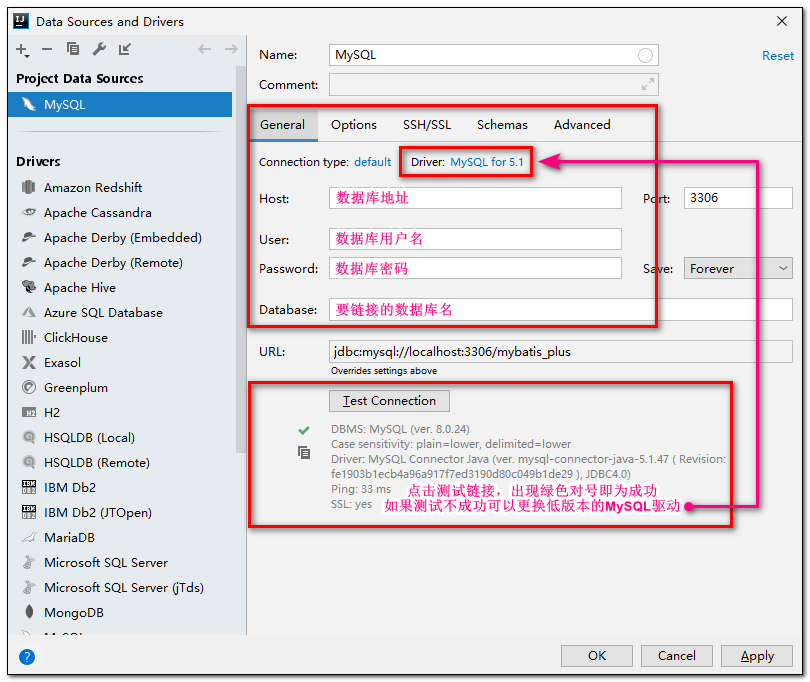
-
找到我们需要生成的表点击右键
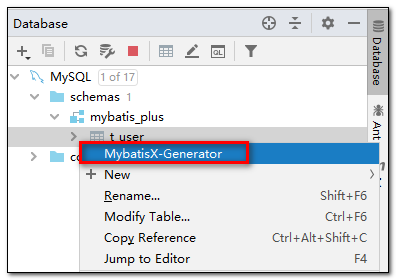
-
填写完信息以后下一步
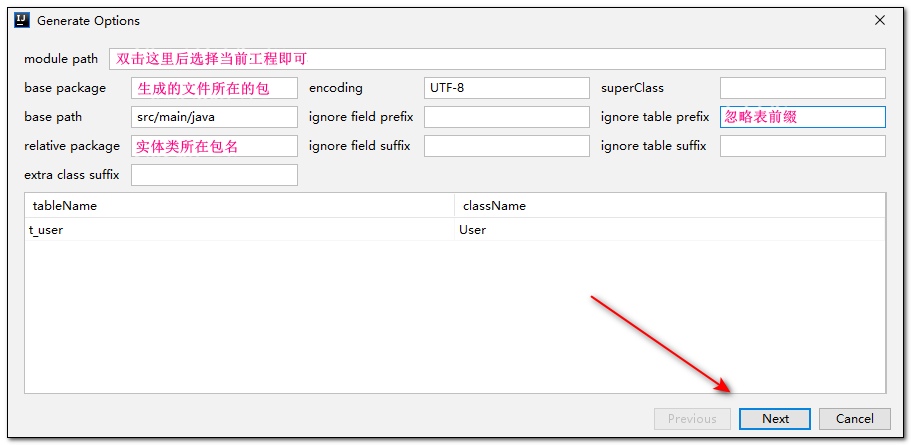
-
继续填写信息
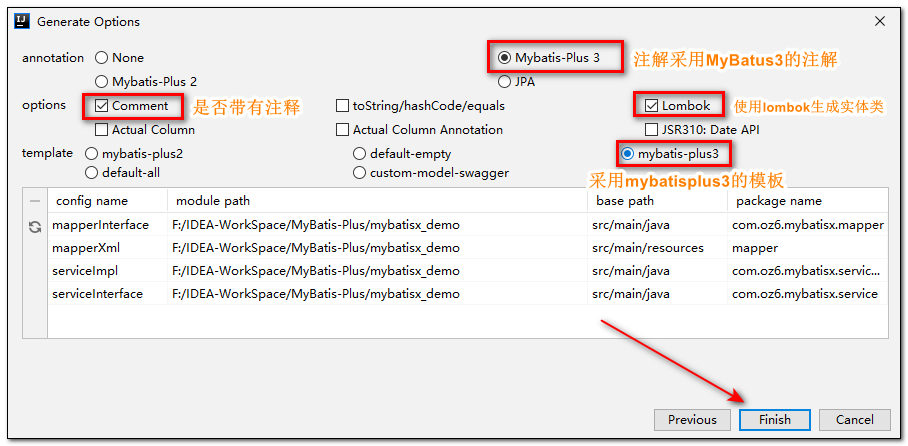
-
大功告成(真特么好用yyds)
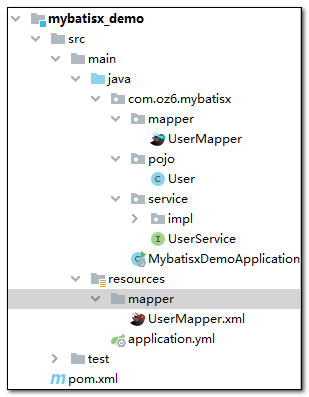
3.快速生成CRUD
MyBaitsX可以根据我们在Mapper接口中输入的方法名快速帮我们生成对应的sql语句





